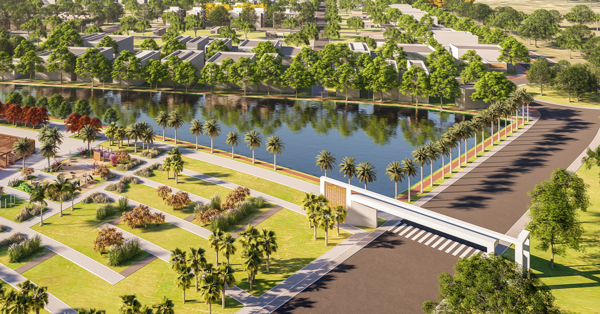Green Construction: Challenges of Plastic and How to Reduce Its Use by Choosing Eco-Friendly Alternatives
Introduction
Green construction has been gaining more space in today’s society, driven by the urgent need for sustainable practices. One of the biggest challenges faced by this movement is the excessive use of plastic in the construction industry. In this article, we will discuss the problems associated with plastic, its environmental consequences, and how we can reduce its use by adopting eco-friendly alternatives.
The Problem of Plastic in Construction
Plastic is widely used in various construction applications, from pipes to coatings and finishes. However, its production and disposal generate serious environmental impacts. The manufacturing of plastic involves the extraction of fossil fuels, contributing to the emission of greenhouse gases. Furthermore, most plastics are not biodegradable, meaning that once discarded, they can take hundreds of years to decompose, polluting soils and water bodies.
The Role of Plastic in Civil Construction
Plastic is widely used in construction due to its moisture resistance, lightness, and low cost. Some of its main uses include:
- Pipes and fittings: PVC and PEX are common in plumbing.
- Thermal and acoustic insulation: Polyurethane foams and expanded polystyrene (EPS) are popular.
- Waterproofing membranes: Polyethylene and polypropylene protect foundations and roofs.
- Coatings and finishes: Vinyl and laminate flooring contain plastics in their composition.
- Structural elements: Reinforced plastic composites are being used in bridges and walkways.
Despite these advantages, plastic poses significant challenges, especially related to its environmental degradation and improper disposal.
Environmental Consequences
- Pollution: The improper disposal of plastic waste generates mountains of debris, which threaten local fauna and flora.
- Gas Emissions: Plastic production is a major source of CO2 emissions, contributing to climate change.
- Resource Depletion: The reliance on fossil fuels for plastic manufacturing is unsustainable and worsens the energy crisis.
Challenges of Using Plastic in Construction
The main challenge of using plastic in construction lies in its persistence in the environment. Synthetic plastics can take centuries to decompose, contributing to soil and ocean pollution. Additionally:
- Recycling difficulties: Not all plastics used in construction are recyclable. Material mixtures make the process even more complicated.
- Emission of toxic substances: The burning of plastics releases harmful gases, such as dioxins and furans, which are dangerous to human health and the environment.
- Impact on fauna and flora: Plastic waste can be ingested by animals, causing irreversible damage to biodiversity.
- Dependence on fossil fuels: Plastic production relies on petroleum, a non-renewable resource that contributes to climate change.
Given these challenges, it is essential to seek eco-friendly alternatives that can replace plastic in civil construction.
Eco-Friendly Alternatives
To promote green construction, it is crucial that architects, engineers, and builders consider alternatives to plastic. Here are some viable options:
1. Natural Materials
Materials like wood, bamboo, and raw earth bricks offer a sustainable alternative to plastic. They are biodegradable and, when sourced responsibly, have a lower environmental impact.
2. Recycling and Reuse
The recycling of construction materials, such as glass and metal, not only reduces the demand for new resources but also decreases the amount of waste sent to landfills. Encouraging material reuse can be an effective solution.
3. Bioplastics
Bioplastics, made from renewable sources such as starch and cellulose, are a promising alternative to conventional plastic. Although still under development, they offer the possibility of products with lower environmental impact.
4. Eco-Friendly Concretes
The use of eco-friendly concretes, which incorporate construction waste and recycled materials, can reduce the dependence on plastics in finishes and structures. These materials are often more sustainable and provide comparable performance.
How to Reduce Plastic Use in Construction
The transition to greener construction requires both collective and individual actions. Here are some strategies:
1. Sustainable Planning
Incorporating sustainability principles from the initial planning stage can help minimize plastic use. Choosing projects that prioritize energy efficiency and eco-friendly materials is essential.
2. Education and Awareness
Raising awareness about the impacts of plastic and the available alternatives is crucial. Workshops and seminars can help construction professionals adopt more sustainable practices.
3. Government Incentives
Public policies that encourage the use of eco-friendly materials and recycling can help reduce the reliance on plastic in construction. Subsidies and tax exemptions for sustainable projects are examples of how this can be achieved.
How to Implement Plastic Reduction in Construction
The transition to eco-friendly materials requires changes in processes and industry mindset. Some strategies include:
- Sustainable projects: Architects and engineers should prioritize low-impact materials from the project’s conception.
- Education and awareness: Construction professionals should be trained on the impacts of plastic and the available alternatives.
- Public policies: Tax incentives and regulations can stimulate the use of sustainable materials.
- Circular economy: Promoting the reuse and recycling of existing plastics can minimize environmental impacts.
Conclusion
Green construction is an urgent necessity, and reducing plastic use is a crucial step in this journey. By choosing eco-friendly alternatives, we not only preserve the environment but also create a more sustainable future for future generations. How about doing your part and contributing to a more conscious construction?
By adopting these practices, we can all make a difference. The time to act is now. Together, we can transform the construction industry and ensure a healthier planet.







